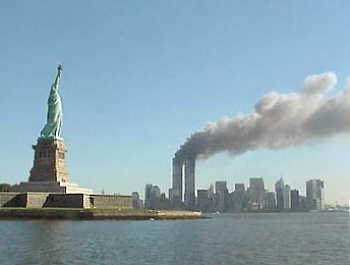Last week, a group of health specialists and 9/11 survivor representatives known as the Scientific/Technical Advisory Committee (STAC) made a historic recommendation to the federal government to add more than 30 types of cancers to the James L. Zadroga 9/11 Health and Compensation Act. It is historic because, since the 9/11 Victim Compensation Fund was first established shortly after the attack, people have been fighting to have cancer added under the law. They continued fighting even when the V.C.F. closed in 2003, and their determination increased when the fund was re-established in 2010.
But the noble mission to treat cancer-stricken 9/11 survivors is far from complete. First, Dr. John Howard, director of the National Institute for Occupational Safety and Health and the chief administrator of the World Trade Center Health Program under the bill, must make his own determination about which cancers should be included. Howard has roughly 60 days, until early June, to make a ruling based on the scientific evidence provided by STAC. Next, assuming Howard decides to add one or more cancers to the bill, there is a federal rule-making process in which Howard would solicit public comments during a 30-day period. If he wishes, Howard can alter his initial decision according to the feedback.
Yet a troubling fact remains: When the latter process starts and finishes, and when the 9/11 cancer patients would begin to receive care at the World Trade Center Centers of Excellence is an unknown. It took six months for the clinics to begin accepting W.T.C. patients following the bill’s passage by Congress in late 2010.
It’s imperative that Howard speed up the process to add the cancers he deems worthy of inclusion, so that our 9/11 heroes can get chemotherapy and other medical treatment they need as soon as possible.
New York’s congressional delegation has requested a special meeting with Kathleen Sebelius, the U.S. Department of Health and Human Services secretary, to discuss the process and hopefully figure out a way to accelerate it. We urge her to schedule that meeting sooner rather than later.
By adding cancer to the bill’s health portion, Howard will also enable the cancer-stricken survivors to apply for financial compensation through the bill’s legal portion, the Victim Compensation Fund. Any new illnesses Howard includes will automatically be considered for reimbursement by V.C.F. Special Master Sheila Birnbaum.
On the city side, we applaud Public Advocate Bill de Blasio for convincing the Bloomberg administration to release critical health data for 321 city police officers purported to have developed cancer from their time at Ground Zero. Thanks to de Blasio’s efforts, the city and Mt. Sinai Medical Center have hammered out many of the privacy issues pertaining to the officers’ identities. As a result, late last month, data including the officers’ age, cancer type and year of diagnosis was handed over to Mt. Sinai for its continued research on the correlation between the disease and Ground Zero exposures.
But Mt. Sinai could benefit from even more data. Now, the city and the medical center must solicit the officers’ ongoing participation in long-ranging studies, so researchers have as full a picture as possible.
Cancer has already taken the lives of too many 9/11 victims who got sick from inhaling the toxic soup of chemicals at Ground Zero in the days and weeks after the Sept. 11 attacks. It’s now time to provide care to those who are still alive but who may not be able to afford treatment.
One scientific fact we know about cancer is that, typically, time is of the essence. The sooner the disease is diagnosed, the better the odds often are of treating it and beating it. So the sooner we get through this red tape, the better the chance we have of saving lives.


















